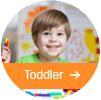Harnessing Technology for Enhanced Learning: How Technology Enriches Early Childhood Education
Enhanced Learning: For some considerable time, harnessing technology for enhanced learning was considered to be simply giving a child a calculator and in more recent times, a PC.
In reality, while well-intentioned, such practices failed to capitalise on the full potential of technology to help in early childhood education and an early learning programme for toddlers.
What is an Enhanced Learning Programme for toddlers?
This involves a structured designed series of educational activities and tasks that are play and fun oriented in nature. However, they often have a powerful subtext in that their design encourages a child to learn and think as they play.
Different providers of such may have different methodologies and might vary the areas being presented from helping the development of vocabulary to basic concepts surrounding numeracy or reading etc.
The role of technology in presenting early learning programmes
- Technology, in itself, doesn’t change the need for such development programmes.
- The real role of technology though is how it can help present such educational programmes to children.
- In that mode, it is increasingly replacing earlier-generation technological presentation aids such as blackboards, movie projectors, TVs and so on. Unlike those, it allows the presentation to be interactive and tailored to a specific toddler’s needs at a given time, rather than being presented on a class-wide basis with the associated risks of some toddlers being left behind whilst others become bored due to things not moving fast enough for them.
- It permits progress at a pace largely selected by the individual toddler.
How children interact with technology
Broadly speaking, toddlers can interact with technology in one of two generic ways:
- passively, essentially meaning exclusively watching and listening;
- participatively, meaning that the child can, in one or more ways, interact with and influence what they’re seeing and hearing.
Both of these may be invaluable but educationalists typically stress the importance of the latter. That’s because it allows the age-old wisdom of “it’s best to learn by doing” to be delivered in a 21st-century classroom environment.
True, there are some challenges when considering an early learning programme for toddlers that is technology-based if you’re seeking individual participation to enhanced learning. Some toddlers may lack the fine motor skills necessary to permit easy use of a keyboard or mouse. Others might struggle to develop the attention span required, though typically that will improve as they age.
Most of these issues can be addressed. Touch screens can be useful, though ‘ruggedised’ models are usually required given how heavy-handed toddlers can be. There are also mouse settings and special peripherals that help younger children to better control their use of the screen. There are also non-PC educational devices that are specially designed for younger children and toddlers.
The importance of a programme
However sophisticated the technology and its supporting programs are, they will still need a professionally structured programme designed to enhanced learning for toddlers for their full benefits to be realised. Sitting a young child down in front of a screen or phone is rarely, in itself, an optimal solution for success and might paradoxically inhibit a child’s broad-based development.
It’s imperative that the hosting early learning centre programme for toddlers is part of an integrated approach that has been designed by expert practitioners and delivered by experienced and fully trained childcare professionals.
Managed correctly, technology can be a huge boost in helping a toddler’s development.













